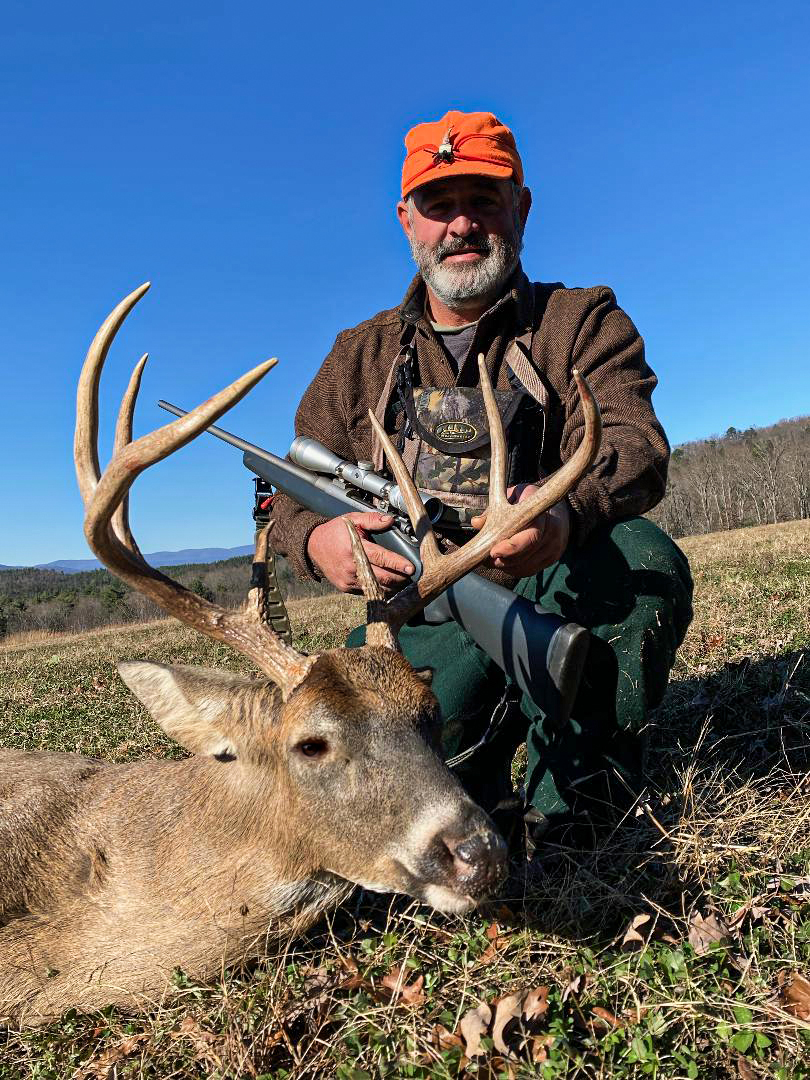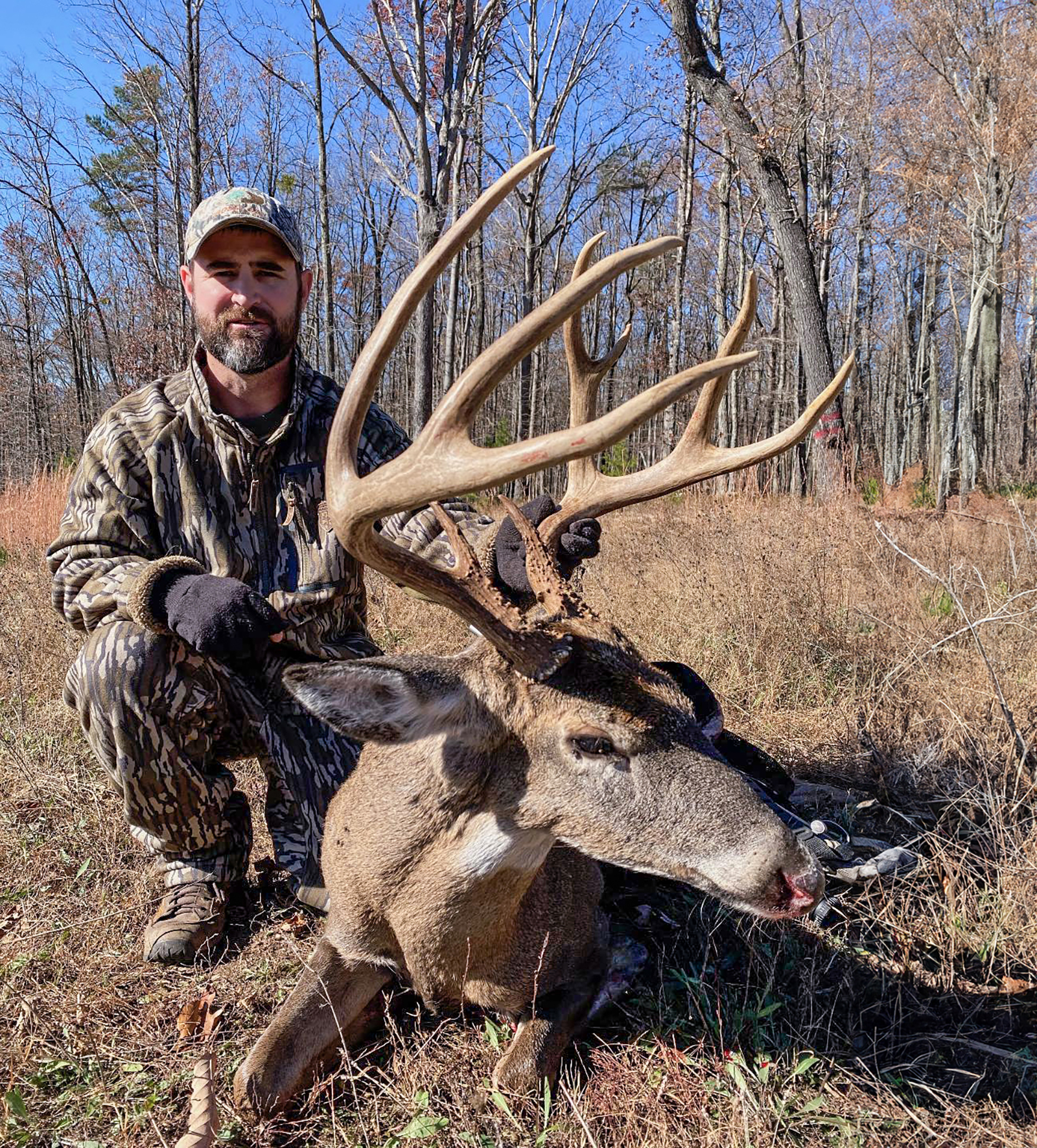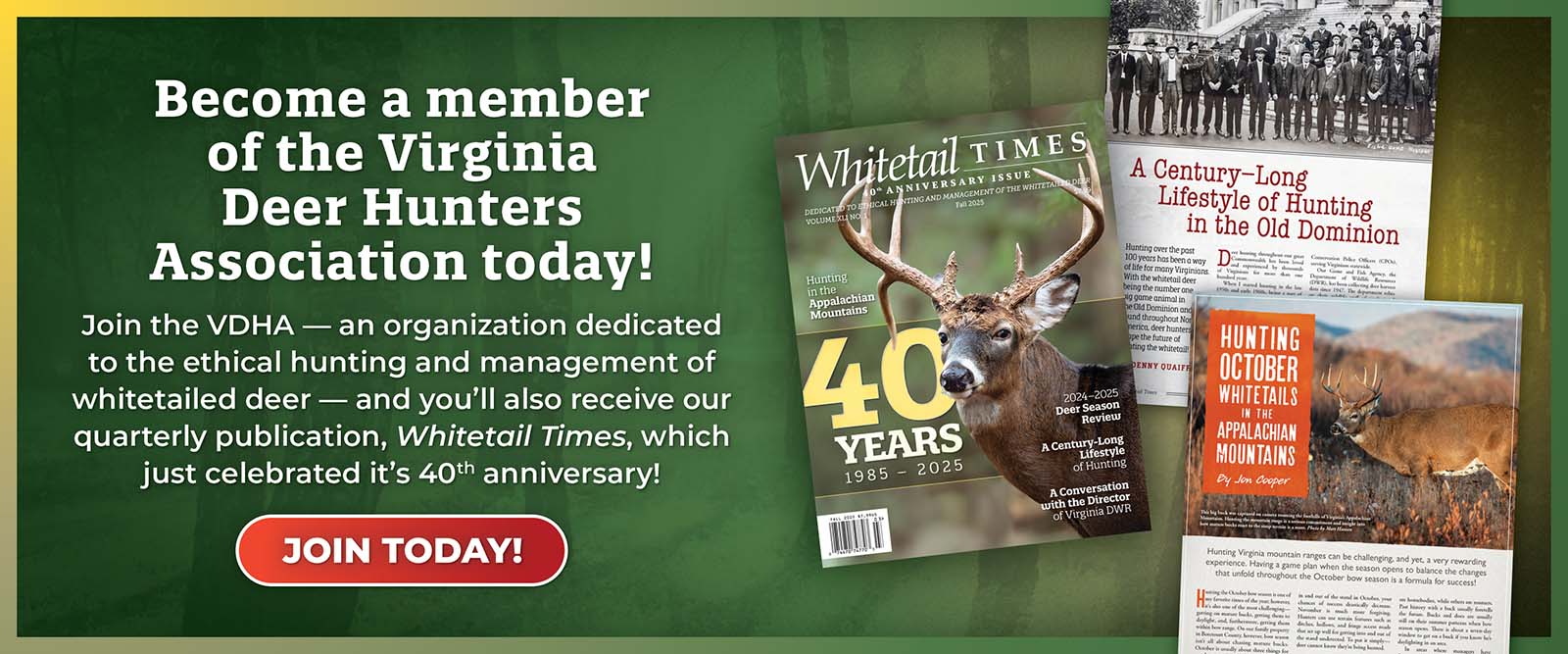By Jon Cooper for Whitetail Times
I don’t care if it’s March or November, a mature buck is always on the brain. It’s an all-consuming, innate thought process for the food chain’s top predator. How can I gain any advantage on a wary old buck? How can I set myself up for success against a nocturnal deer?
I like to believe that narrowing down and harvesting Virginia’s mountain bucks are two of the most difficult tasks in hunting. It’s like playing baseball: hitters, like hunters, are going to fail many more times than they experience success, and it takes a variety of things to go right in order to be successful. We aren’t pinching them down between agricultural fields. We don’t have hundreds of acres of soybeans or the prettiest winter green plot that has deer coming in on a string. We’re hunting hundreds or thousands of hardwood acres, where one ridge looks similar to the next. It’s a needle-in-a-stack-of-needles kind of game.
So, how can we flip the odds in our favor? We’ve been successful in growing, holding, and harvesting mature bucks in some of the poorest soil and heavily forested conditions, and we work our tails off all year long in preparation for the November payoff. Sometimes that payoff doesn’t even happen.
I’m going to assume for this article’s sake that you have a management plan in place, and that you are improving the habitat on your landscape with the goal of producing mature bucks. That’s the very foundation of harvesting good bucks—passing 3-year-old bucks, keeping doe numbers in check, and continually improving the nutritional carrying capacity on the landscape. It’s pretty simple—you first have to have them in order to harvest them. The bulk of our planning and field time is spent radically restoring our native landscape with timber canopy reduction and fire to improve our nutritional carrying capacity.
The following tactics have helped us be successful during the rut in Virginia’s mountains. We’re hunting elevations that range anywhere from 1,200 to 3,300 feet in primarily forested blocks.

The author’s brother killed this 5 ½-year-old buck in 2022 on an elevator ridge that served as the main travel route from lower elevation food to bedding areas and family groups at a higher elevation.
My brother and I pack on miles before and during bow season looking for two things: family groups and food. More on the latter in a minute. Family groups consisting of mature does and yearling bucks and does that bed in similar locations year after year. (Young bucks will be cast off by does in the near future.) It’s perhaps learned generational behavior that varies a little bit based on food season to season. We’ll make note of family group bedding locations, both for now and future years, and we’ll revisit them annually depending on the bucks targeted in the area.
If a mature buck is known to use a 500- to 750-acre block—you’ve seen him or have pictures of him—know where the family groups live. He certainly does. In early November, before the first does go into estrus, mature bucks are going to be on their feet scent-checking these bedding areas. If there are any topography features connecting family group bedding areas from ridge to ridge, that’s a perennial stand setup. If a hunter can find a terrain feature—saddles, flats, etc.—that provides a constant wind direction, he or she will be on the money. Wind often changes based on topography.
We’ve found that does primarily bed on the tips of ridges with thick escape cover nearby, whether that’s a laurel thicket or regenerating clearcut. Although deer are spooked easily, the rut is usually a forgiving time with respect to hunting pressure. Obviously, if a hunter is blowing deer out of food plots or hunting the same stand daily, that’s going to have a negative impact on daylight deer sightings. However, hunting hardwoods during the rut is much more forgiving with respect to human scent and pressure. Bucks just have something else on their brain, and it’s a forgiving time when hunters can be aggressive. Finding these family group locations is at the top of our preseason to-do list.
We bowhunt October, targeting does and black bears over acorns. Our goal is to get a chunk of our doe work out of the way ahead of the rut. Also, removing the fawns’ biggest predator in the bear is important for us in October. Bears have been plentiful on our landscape, and removing a portion annually is a priority for us.
November 4 through 11 is the time when a hunter needs to be in the woods. This window increases your odds of catching an old buck on his feet, looking for that first doe to pop. If a target buck is known to use a certain area, odds are pretty good that he’s going to find the first doe that comes into estrus within that range.
Yes, bucks are killed during the lockdown phase of the rut, too, but for the next 10 days starting on November 12, things get tougher. Bucks just aren’t moving much unless they’re between does, and they’re usually breeding does in the thickest cover around. If it is the lockdown phase of the rut and you’ve seen a buck in a particular location, odds are pretty good that he’s going to be in that same area with a doe for a day or two. It’s a good time to catch him again with his pants down. We like thick bedding areas or a young forest during the lockdown phase. Thick cover seems to be the name of the game during lockdown, and don’t be afraid to get on the move and cover ground. Bucks that are locked down with does are in another world at this time. He’s solely focused on that doe and just may present a shot.
We’ve also had strong success from November 22 through 25. Mature bucks are on their feet in daylight, looking for the last available does to come into estrus. Obviously, this is a shorter window, but this phase feels similar to the pre-rut seeking phase. It’s a good time to catch a mature buck before the rut completely winds down.
Once hunters know where family groups primarily bed, using terrain features to one’s advantage is a smart bet. Saddles on ridges and flats on or between ridges connecting these locations are ideal terrain features that bucks will travel during the pre-rut.
It’s not always the case, but often, bucks travel ridges like humans. If we see a shortcut on a ridge through a gap, we’re taking it. If we see a direct shot from point A to B through a flat, we’re taking it. Bucks are the same way. It’s as if most bucks’ goals are to exert the least amount of energy to breed that next doe in estrus. Again, deer differ from individual to individual.
At higher elevations, elevator ridges are a main travel route for deer moving from higher or lower elevations. Elevator ridges connecting known family group bedding areas with food are another ideal location for a stand site. Mature bucks use elevator ridges connecting higher and lower elevations traveled during the rut. On average years, acorns either hit at lower or higher elevations, and deer will be traveling certain elevator ridges to and from food and bedding areas. It’s a good time to catch a mature buck.
If one is hunting the same property year after year, there’s likely some sort of history you have with buck inventory, whether it’s through trail cameras or actual in-stand observations. Once the velvet sheds in early September, bucks’ ranges usually shift. They most often rut in the same locations year after year. This may be near or far from their summer range. It just depends on the buck’s individual personality.
Keeping track of these historical locations for specific deer can give hunters an advantage. During the 2021 season, I saw a good 4-year-old buck locked down with a doe. On November 8, 2022, I killed him about 500 yards away from where I saw him the previous season. The plan was to saturate that acreage during the rut in hopes of catching him on his feet during daylight. As luck would have it, he was with a doe—and three other bucks, likely the first doe that came into estrus in that few hundred acres. Most often, plans don’t work out like that.

The author harvested this 5 ½-year-old buck on November 8, 2022, 500 yards from where he saw the buck in 2021 locked down with a doe. Likely the first doe that came into estrus in that acreage, this buck fought off multiple immature males and expressed incredible vocalizations.
Most of the buck sign is made at night. You see that evidence from trail cameras. There’s a window in late October and early November when bucks are daylighting at scrapes. That could certainly create an opportunity for a hunter. In fact, my brother has killed several Pope and Young bucks with a bow during this time. Scrapes go cold when does start going into estrus and pick back up again when bucks are between does and as the rut is winding down.
Hunting big rub lines or scrapes can be frustrating. Sign is a lesser part of the process for us. We’ve also noticed that buck sign varies from year to year primarily based on October cold fronts and food availability on the landscape. We don’t key in on buck sign too much in order to harvest mature bucks. Little bucks can make larger scrapes and rubs, too. The presence of sign is more of a bonus to areas we are targeting.
The best time to go hunting is when it’s raining and when it’s not, but some rut windows are certainly more advantageous than others. We plan our hunts and time accordingly. If hunters know a mature buck is frequenting the area, you have to be there. There’s no substitute for that. That’s why the biggest single factor of killing mature bucks is persistence, regardless of geographic location. Staying after them. We’ve pre-determined we’re going to be in that given acreage if a buck is using it. Being there is the only thing a hunter can control. I can’t control which does are going into estrus, and I can’t control where he’s going to be. Being persistent, however, has helped us to harvest several great Virginia bucks.
The more details I know about a given area, family group bedding areas, mast locations. and known history with a deer, the more of an advantage I have to catch a mature buck on his feet. There’s simply no substitute for being there and being aggressive. Hunters have a limited window in November to find and harvest a mature buck, and being more aggressive than not has helped us get on and kill several good mountain bucks.
Jon Cooper manages his family’s 10,000-acre recreational property in Botetourt County and has a passion for habitat management. He serves on the Virginia Department of Wildlife Resources board, along with being a director with the Appalachian Habitat Association.
©Virginia Deer Hunters Association. For attribution information and reprint rights, contact Denny Quaiff, Executive Director, VDHA.


